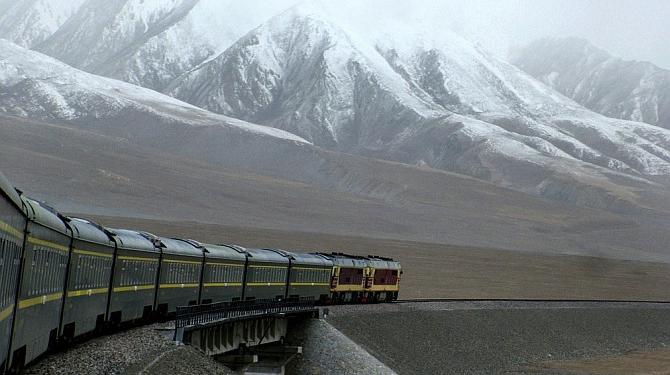The Himalayan states are important for the security of the country, given the fact that they share borders with China. However, the previous Congress governments have neglected the Himalayan states in last six decades. The infrastructure development in these states is tougher due to the difficult terrain and month’s long snowfall. But the connectivity to these areas is important for strategic security and welfare of the people residing there. The Modi government has made tremendous efforts to connect the eight northeastern states and Ladakh region with rest of India. The construction of three bridges on the Brahmaputra river, which was pending for decades, was completed and opened for people’s use. Railway line and roads are under construction to connect every state’s capital Previously, capital of only two northeastern states were connected through railway line.
For the Ladakh region, an all-weather railway line will be constructed. The region remains cut off from rest of the country for six months during winters due tO closure of 434-km long Srinagar-Leh national highway. “The work on the detailed project report for an all-weather railway line between Himachal Pradesh to Leh has started. The railway line once completed will provide all-weather connectivity to the region which is presently dependent on a road through Kargil which only opens in summer,” said the defense minister Nirmala Sitharaman.
The defense minister in the Modi government has visited Ladakh for the fourth time to fast track the development initiatives in the region since she became defense minister in September 2017. “This is for the first time that these Himalayan states are witnessing development in the shape of construction of new railway lines, better roads and airports,” said Sitharaman. “The funds were directly given to Ladakh councils instead through Srinagar headquarters to avoid delay in the development works. Leh was given more administrative and financial powers to utilise the money which resulted in speeding up of various development,” she added.
A few months back it was announced that Modi government will construct 44 ‘strategically important’ roads alongside India-China border and 21 km of axial and lateral roads in the areas bordering Pakistan. The Central Public Works Department (CPWD), the government construction agency has been asked to construct 44 strategically important roads for quick mobilization of troops along the border. The 4,000 km long Line of Actual Control (LAC) stretches from Jammu & Kashmir to Arunachal Pradesh. “The CPWD has been entrusted with construction of 44 strategically important roads along the Indo-China Border spanning 5 states of J&K, Himachal Pradesh, Uttarakhand, Sikkim and Arunachal Pradesh,” as per annual report of CPWD.
India could give a befitting reply to China only if it has a solid infrastructure in the region for movement of its armed forces to fight the mighty Chinese forces. The infrastructure development in the region is also important from the civilian point of view, as it will make the life of people in the regions a bit easier. The people in border areas region live in very difficult circumstances; therefore, investment by government is necessary. The infrastructure development in the region will also promote tourism in the region which will bring economic prosperity of people living in these border states.
































